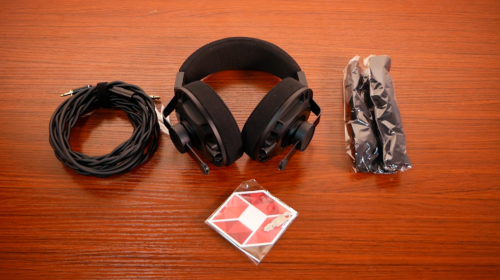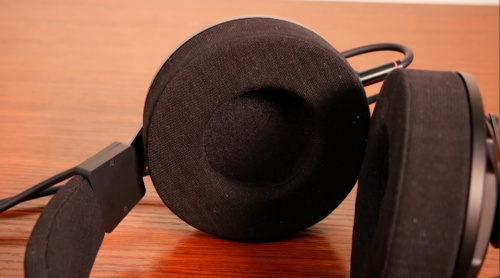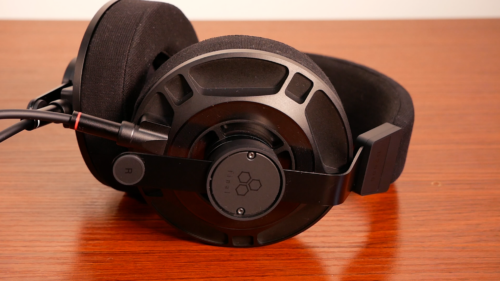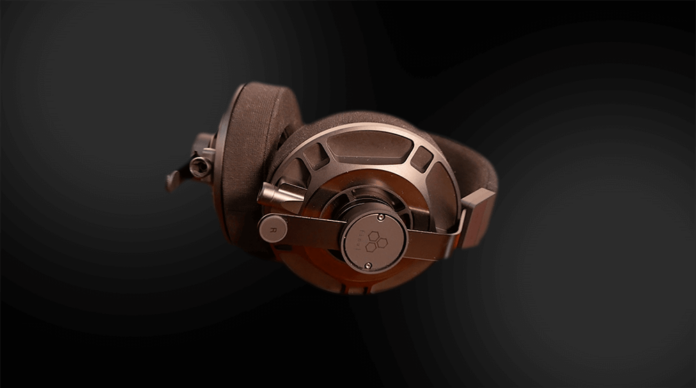Final Audio has long held a seat at the top of the line table with their D8000 series of headphones. Now, they look to add to their talented D-Series roster with the D7000. At a lower price, around $3,500, let’s see what this pair of headphones are capable of!
What you get
- D7000 headphones
- 3 meter black OFC cable with ¼ inch termination
- A cable pouch
- A protective case
- Locking key for said protective case

Look and Feel
To the eye, the D7000 looks very similar to the D8000 Pro. However, there are a few exceptions that keep this set feeling stylish and new. The most obvious difference is that the D7000 is finished in a matte black color, a change from the silver colorway on the D8000 Pro. Likewise, the provided cable is a matching black color.
Build quality is a highlight of this headphone. From its ear cups to the headband, which are made from a fabric crafted from a special Japanese paper, everything about the D7000 screams premium quality. The cable is nice and thick without being too stiff and it has absolutely no microphonics. The cable also features a locking mechanism for its connectors. The clamping force is strong but not uncomfortable, so the headphone is secure on the head (which you’ll come to find out is an important feature, as these will certainly have your head rocking back and forth).
Overall, the D7000 is a very comfortable, very premium headphone. As long as you’re a fan of the black finishing, you can’t go wrong on style or fit.
Design
The big new feature on the D7000 is its new “Pinna Align Diffuser.” After testing various ear shapes, Final Audio settled on a design for the diffuser. This is meant to help bring accurate sound to all ears as the Pinna is different on each person’s ear.
The D7000 sports a planar magnetic driver and clocks in at 50 ohms with a sensitivity of 89 dB. In other words, this is not the easiest headphone to drive. Using the Fiio Q15 and the iBasso DC-Elite DAC/amps, I was pushing the gain pretty high. You may even want to run these balanced to maximize power. This is where a provided balanced cable would have been nice.
So if you’re looking to pick up the D7000, I definitely recommend a high quality DAC/amp setup that can properly drive them.

Soundstage
If you’ve listened to the D8000 (any version), you know that Final Audio is capable of packing a wide soundstage into their headphones, and with the D7000, that generally remains to be the case, though it may depend on your source and amplifier.
With the Q15, I found the soundstage to be a bit more intimate, with right to left feeling a bit closer together. However, imaging within that range is excellent. This isn’t to say that the soundstage was narrow by any stretch, just not as expansive as the D8000 Pro. When I switched to the DC-Elite, though, the soundstage really opened up, stretching its lateral space and lengthening its sense of depth as well.
Low End
If you like a robust low end to your headphones, then I have the great joy in telling you the D7000 delivers bass in spades. And it’s not just quantity here; these pack a deep but detailed and deliberate punch. Listening to Neil Young’s “Out on the Weekend,” the D7000 goes deep with impressive slam, all while keeping the bass line and the kick drum perfectly separated.
Jumping up to the mid-bass is where my only nitpick with this headphone’s sound signature lies. With the Q15, I find the transitional space between the low end and midrange to feel a little bit bloated. With tracks on the busier side, like Sufjan Stevens’ “Chicago,” this may present to be an issue. But when I switched over to the DC-Elite, this pretty much went away. That transitional range in the mid-bass was a lot smoother and well-defined. So this really comes down to your personal preference.
Midrange
I’m going to be upfront here: this is a V-shaped headphone. But that doesn’t mean the mids are forgotten by any stretch. While recessed in the upper mids, the D7000’s midrange is detailed and present. Continuing down the Neil Young rabbit hole, “See the Sky About to Rain” demonstrates the excellent detail retrieval and dynamics of the D7000’s middle frequencies, as Young’s voice drifts from quiet to loud. But it was on Kacey Musgraves’ “Butterflies” where it became clear to me that the mids still present a warm and engaging listen.
However, due to the aforementioned recessed mids, I did miss a little bit of the crispness that you can hear on a snare drum, for example. Don’t get me wrong, the D7000’s don’t necessarily miss out on detail with these hits, they just present them as more liquid and musical rather than snappy with a fast attack.
High End
The high end is where I think these headphones really nail it. Warm headphones can tend to veil their top end, making for a muddy sounding headphone. But that just simply is not the case here. The treble region of this headphone is clear and resolving, making it both warm, musical, crisp, and detailed all at the same time.
On Dijon’s “Talk Down” and Kendrick Lamar’s “DNA” the high ends tied together the punchy lows that come with their bass tracks, supplying a rich and enjoyable tonality.

Summary
Overall, if you’re looking for a fun and engaging sounding headphone at a fraction of the cost of the D8000 Pro, the D7000 is probably for you. This headphone somehow manages to have a deep and impactful low end, a detailed and musical midrange, and a crisp and resolving top end. For all genres, it’s hard to think of a better headphone that fits that bill at this price range.
You can find the Final Audio D7000 at Audio46.com
Compare the ranking of various headphones, earbuds and in-ear monitors using our tools.
Discuss this, and much more, over on our forum.
---MAJORHIFI may receive commissions from retail offers.














